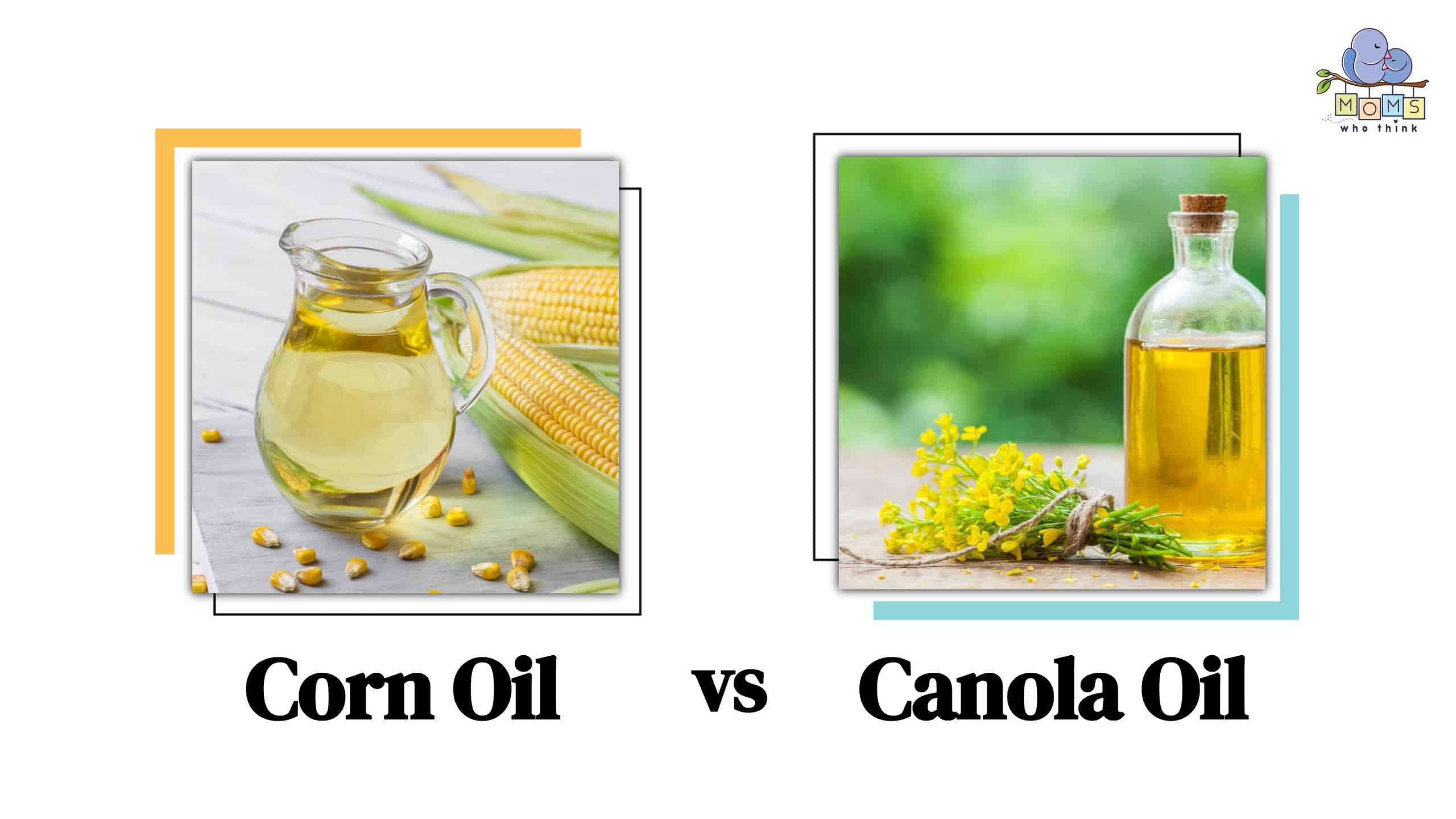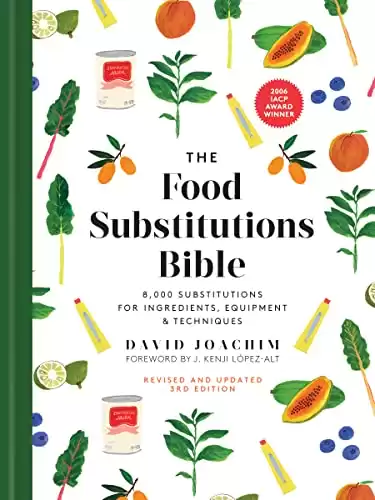Corn and canola oils are excellent picks when looking for a good oil for your cooking. They differ slightly despite fulfilling similar functions. Corn oil has a mild buttery flavor and is hence more flavorful than canola oil, and its smoking point is also higher. On the other hand, canola has little to no taste with a lower smoking point, so it can only withstand low heat before smoking begins. Let's dive deeper into corn oil vs. canola oil and see what they are about.
- The must-have convenient reference guide for every home cook!
- Includes more than 8,000 substitutions for ingredients, cookware, and techniques.
- Save time and money on by avoiding trips to grab that "missing" ingredient you don't really need.
Corn Oil vs. Canola Oil: What are the Differences?
The most important difference between canola and corn oil is that canola oil is derived from the seeds of the canola plant while corn oil comes from the germ of corn kernels. This ingredient difference means corn oil has a stronger flavor (but still mild) whereas canola oil is relatively neutral.
Because canola oil is neutral it's used in a greater variety of dishes. From a health perspective, canola oil has less saturated fat than corn oil and is higher in omega-3 fatty acids while corn oil is higher in omega-6 fatty acids. Canola oil also contains more vitamins like Vitamin E and Vitamin K.
When looking at both oils you can tell them apart because canola oil is a deeper yellow than corn oil.
The Background on Why We use Corn Oil and Canola Oil
Oils improve food quality by adding a bit of flavor. They provide essential nutrients and vitamins despite not being in any food category. Different kinds of fats are available, but corn and canola are what people prefer most for various cooking needs. Not only do they appear similar, but they also function in similar ways. However, they have several characteristics that set them apart.

©Marian Weyo/Shutterstock.com
A key one is their extraction points. Corn oil, also known as maize oil, is extracted from the germ of corn, while canola liquid fat comes from rapeseed, a relative of cabbage. First spotted in Canada, the canola plant came after farmers crossbred the rapeseed plant. Canola comes from the words ‘Canada' and ‘Ola,' which means fat. Since then, plant breeders have produced multiple canola varieties to improve seed quality and canola oil manufacturing. Corn oil is produced in large amounts in the United States, with vast corn fields. Brazil and China also have and sell to the market.
Though corn and canola oils look alike, their colors vary slightly. Corn is light yellow, while canola has a deep yellow, similar to the canola plant. The flavor is another difference between the oils though it mostly goes unnoticed. Corn and canola oils are also called neutral oils meaning they have mild to no taste. Corn has a mild flavor, while canola has none, making it ideal for most dishes, especially baked ones, since they retain their original flavor. As for texture, corn oil has a light texture, while corn feels smooth, which is the reason why it's very versatile.
Corn oil has a higher smoke point of 450 F than canola, whose smoke point is 400 F. Based on this, corn oil is the best for shallow and deep frying or other methods requiring high heat. However, these smoke points are close, so you can still fry using canola.
Corn Oil vs. Canola Oil: Which is Healthier?
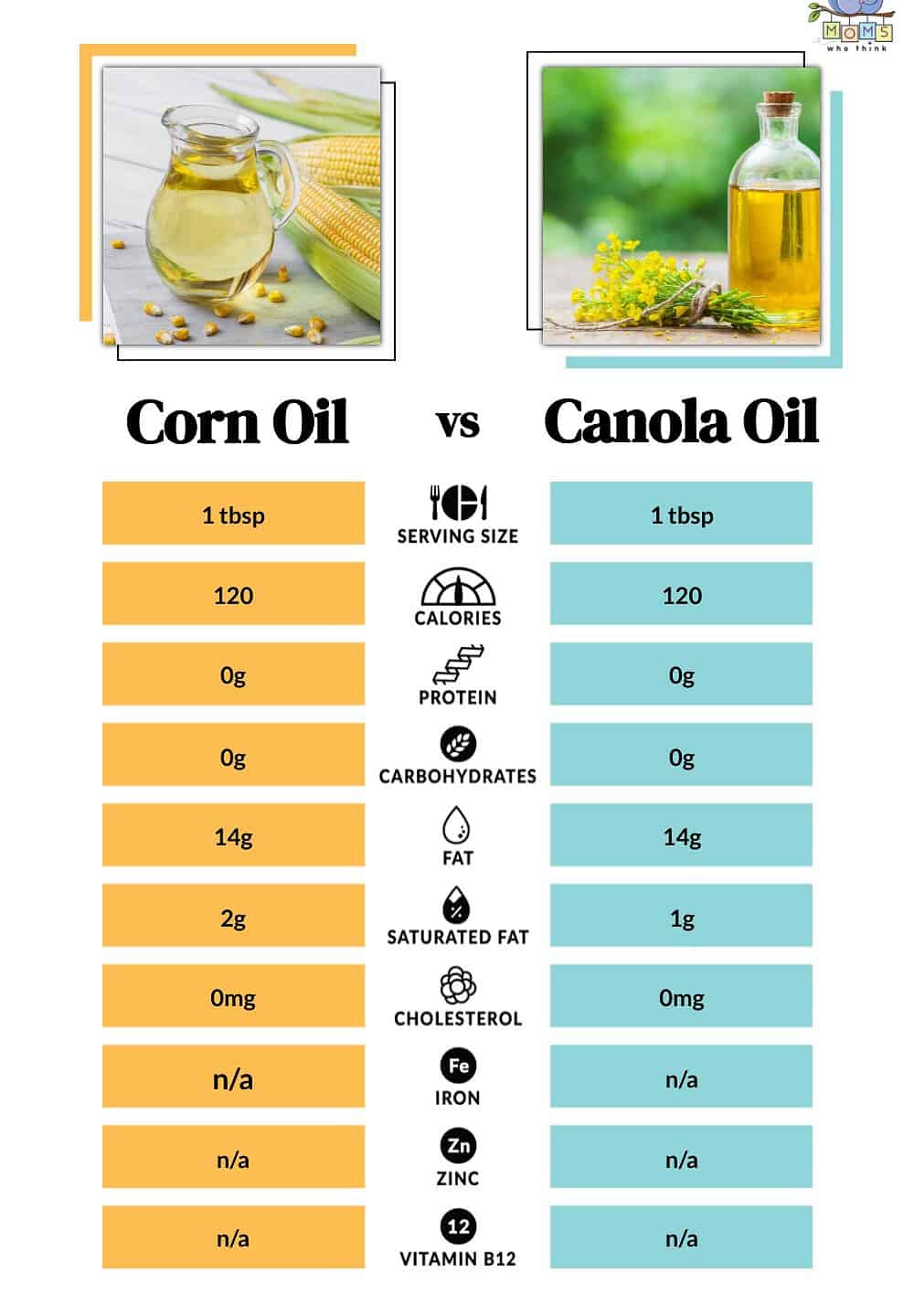
©
These oils provide almost the same amount of calories. However, canola is said to be the healthier version because of its low fatty acid composition compared to corn oil. It's also more nutrient dense than corn though both have vital nutrients for the body.
Corn oil has 120 calories per tablespoon, while canola has about the same number of calories of similar measurement. As mentioned earlier, the difference is slight without much effect on the body. Corn has a higher percentage of vitamin E than canola. It has approximately 13% while the latter has 16-17%. Vitamin K is 0.25% of the recommended daily intake in corn oil and 8% in canola oil.
Vitamin K is great for good heart health, bone metabolism, and blood clotting. Both oils have approximately 14 grams of fat, both saturated and unsaturated. Saturated oils are unhealthy; corn has 15% of that, while canola has 7%. Omega-3 is a common fatty acid in these oils. Canola has a more significant percentage of it than corn oil. The omega-3 fatty acid helps reduce inflammation and reduce blood pressure.
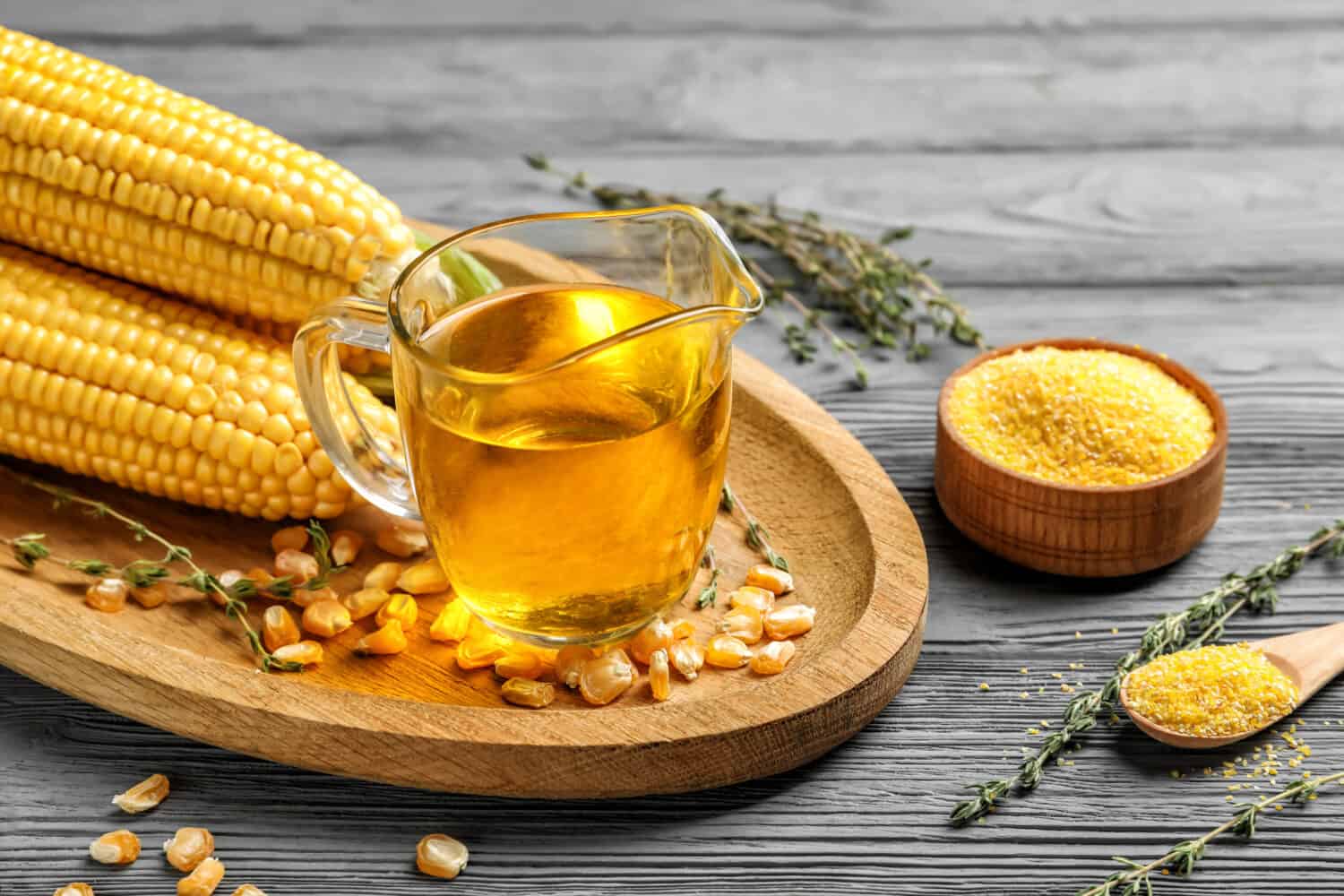
©Africa Studio/Shutterstock.com
Is Corn Oil the Same as Canola Oil?
Corn and canola oil share some qualities but are not the same. Both are versatile cooking oils that are stable and have neutral flavors but come from different plants.
What is Corn Oil?
Corn oil is a versatile cooking product. It is a result of the production of cornstarch and cornmeal. Being a liquid at room temperature, cooks use corn oil in sauces, seasonings, salad dressings, potato chips, soups, etc. It has a mild and pleasant taste that hardly changes the food's flavor. The light texture and high stability make it a highly preferred oil by many. Corn oil reacts well to high heat and does change the taste or burn. You can use it for baking, deep frying, pan frying, sauteing, making oil dips, etc.
- The must-have convenient reference guide for every home cook!
- Includes more than 8,000 substitutions for ingredients, cookware, and techniques.
- Save time and money on by avoiding trips to grab that "missing" ingredient you don't really need.
What is Canola oil?
Canola oil is produced from crushed seeds of the canola plant, which is grown widely in Canada. Like corn oil, it's versatile and can be used for sauteing, baking, grilling, pan frying, salad dressings, marinades, coating pans before baking, etc. The oil has low amounts of saturated fats, Omega-3,9 and 6, making it one of the healthiest cooking oils. It has a neutral flavor, smooth texture, and high smoke point, meaning it doesn't smoke easily.
Can You Substitute Corn Oil for Canola Oil and Vice Versa?
It's possible to interchange corn oil and canola oil for various reasons. Both have similar nutritional values, slightly different tastes, flavors, and smoke points. Corn oil has a buttery flavor. Suppose you are okay tasting that in your food; it is an excellent replacement for canola oil. On the other hand, canola oil has no flavor, so nothing about your food will change.
Best Substitutes for Corn Oil
Corn oil is a popular choice in the kitchen because it has a high smoke point, meaning it can be heated to very high temperatures without burning. It also has a neutral flavor that's great for sautéing or roasting vegetables. However, when you find yourself in a kitchen that lacks this oil, vegetable oils are the best substitutes. Examples are peanut oil, safflower oil, and other plant-based oils such as olive oil, avocado oil, and canola oil. These oils have similar cooking properties to corn oil, so they'll work well in your recipes. For them to work, ensure they are flavorless, mainly for baking and salad dressings.
Olive oil is also suitable but has a strong taste, so it's not best for baking. It's an excellent non-stick cooking spray with all the plant-based oils. Soybean oil is also a suitable corn oil replacement; however, it has more saturated fat and a pungent taste. When substituting, use the exact measurements you use with corn oil to achieve similar results.
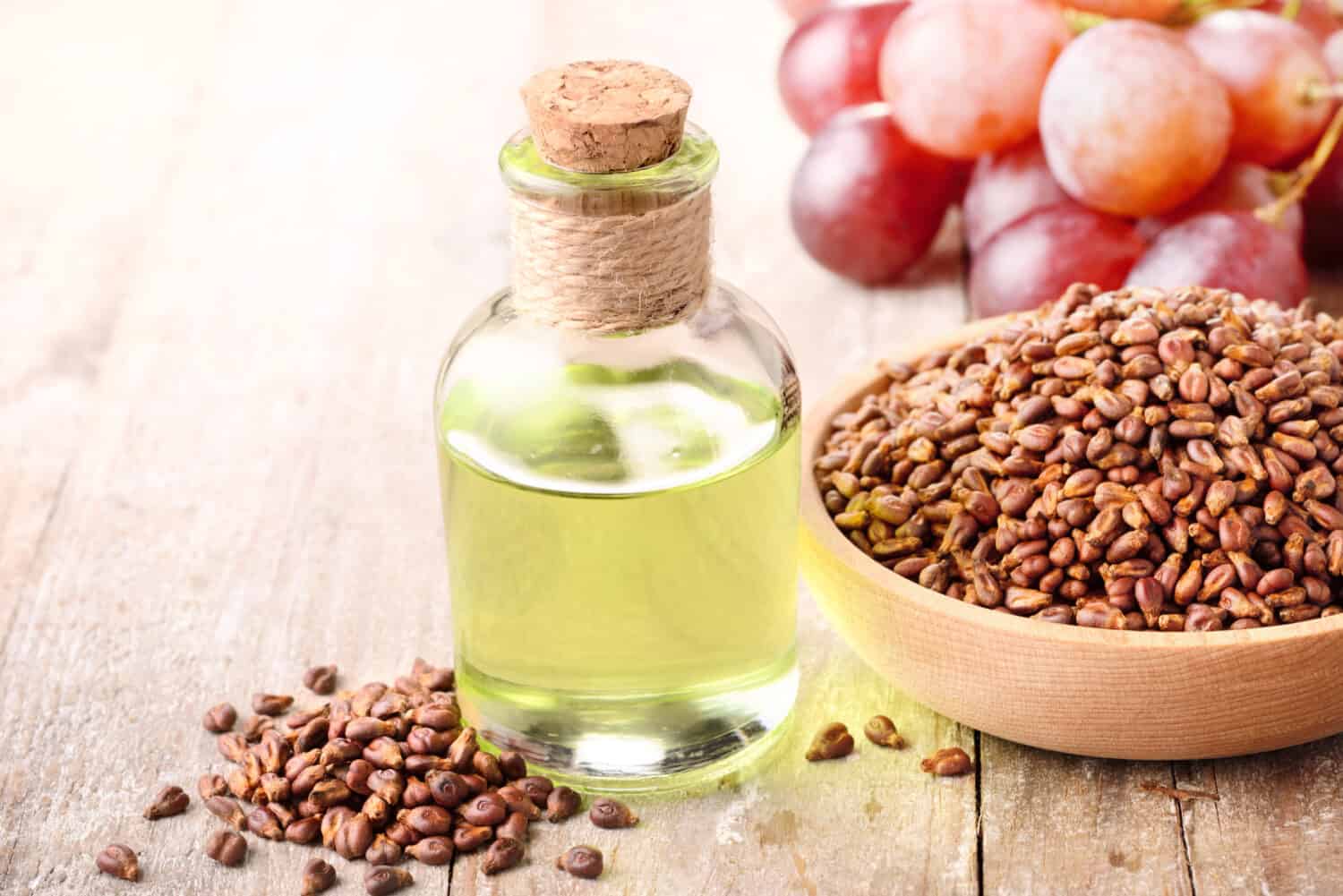
©AmyLv/Shutterstock.com
If you're looking for an alternative that's lower in saturated fat and higher in monounsaturated fats (the good kind), try grapeseed oil instead! Grapeseed oil has a slightly peppery flavor that makes it great for marinades or salad dressings – and it's also high in linoleic acid, which means it helps reduce inflammation in the body. It's also non-GMO certified so you know exactly what goes into each bottle of this pure ingredient.
Best Substitutes for Canola Oil
Since canola oil is flavorless, you'd think that you only need similar oils. That's not the case because olive oil is a substitute with a deep floral taste. It's great for salad dressings and sauteing, but avoid it while baking. Grapeseed, sunflower, and vegetable oils are neutral liquid fats, ideal for all canola functions. For every tablespoon of canola oil, replace it with the exact amount of your oil of choice. You can use butter or melted coconut oil for baking. Baked items like cookies, cakes, or muffins will cook well; the texture will be similar to canola oil but may taste different. Melted coconut oil has a slightly different flavor but is a good choice for vegan dishes.
Corn Oil vs Canola Oil: Health Benefits
Good Heart Health
Canola oil is said to be better than corn oil for the heart. It has more monosaturated fats than corn oil which has twice as much fats. They help reduce the risk of strokes and heart attacks.
Proper Cholesterol Levels
Both oils help with cholesterol, but canola oil is better due to increased monosaturated fats and Omega-3 fatty acids. Corn oil still has some advantages due to the phytosterols present. They help lower cholesterol absorption, thus preventing plaques from forming in arteries that may cause a heart attack and high blood pressure.
Good Brain Health
Corn and canola oils have significant amounts of Omega-3 fatty acids though canola oil has more. The fatty acids help blood flow to the brain and build and maintain healthy brain cells. Cooking with these oils, especially for the elderly and young, helps with learning and good memory.
Which Oil is Better for Sauteing and Frying?
When it comes to sauteing and frying, there are many different types of oils that can be used. Two of the most popular options are corn oil and canola oil. Corn oil has a higher smoke point than canola oil, so it may be the best choice for deep-frying because it is less likely to burn. Canola oil also has a high smoke point, making it suitable for sauteing at higher temperatures. Both oils have neutral tastes and are low in saturated fat, so they make good choices for both sautéing and frying. Ultimately, the best choice will depend on the application at hand. If you are frying at a lower temperature, corn oil is a better choice because it has a higher smoke point. If you are sauteing at a higher temperature, canola oil would be the best option because it has higher heat capacity.

©Marian Weyo/Shutterstock.com
Which Type of Cooking Oil Should You Use for Salad Dressings?
When it comes to making salad dressings, you can use both corn oil and canola oil. Corn oil is a good choice for salad dressings because it has a light flavor and contains high levels of monounsaturated fats. Canola oil also works well in salad dressings due to its neutral flavor, plus it's low in saturated fat and high in polyunsaturated fats, making it a healthier option compared to other oils. There are some salad dressings that contain olive oil, but these typically have a higher acid content than other salad dressing oils. They're also high in monounsaturated fats, so they're not as healthy as corn or canola oils.
- The must-have convenient reference guide for every home cook!
- Includes more than 8,000 substitutions for ingredients, cookware, and techniques.
- Save time and money on by avoiding trips to grab that "missing" ingredient you don't really need.
Conclusion
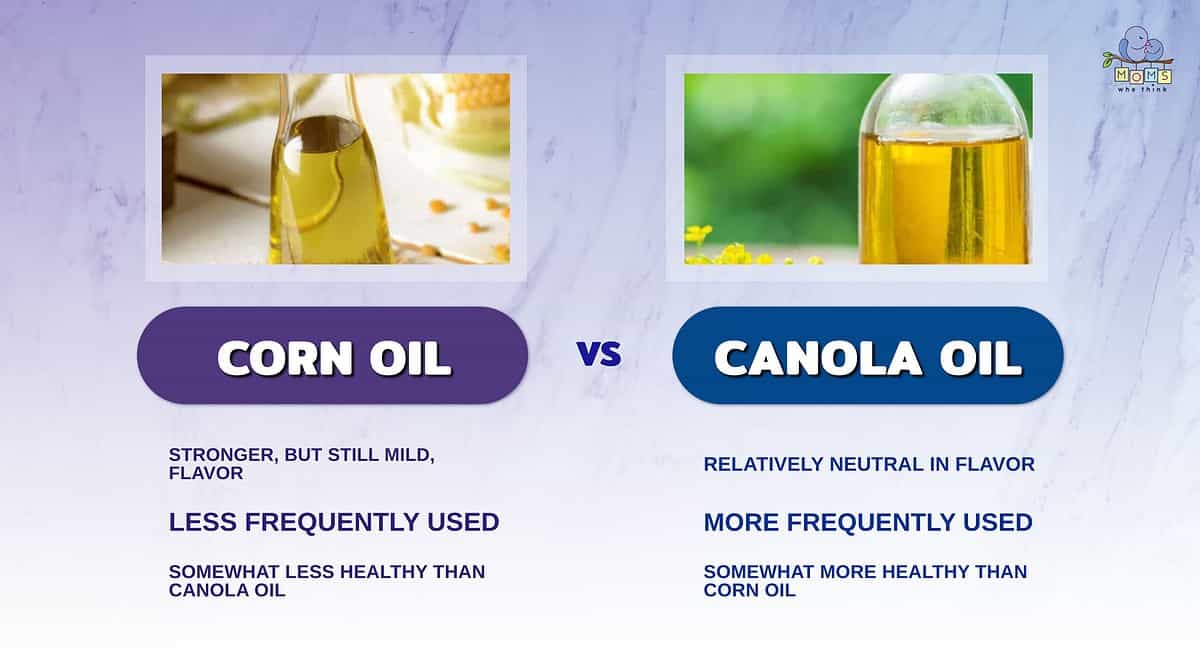
- Corn oil does have a stronger flavor than canola oil, but its taste is still very mild and should have little to no effect on the final product.
- Because canola oil has a relatively neutral flavor, it is more commonly used than corn oil.
- Canola oil has more vitamins than corn oil, making it a slightly healthier option.
Corn and canola oils are two popular choices for cooking. They have a mild taste, so there is generally no change in food flavors, and they handle heat pretty well. They also have excellent nutritional values and health benefits.
Now that you know the difference between corn oil and canola oil, you can make an informed decision about which one is right for your needs. If you're looking for something that tastes great and has a high smoke point (so it won't burn easily), then go with corn oil. On the other hand, if you want something healthier with more omega-3 fatty acids than omega-6s (which helps reduce inflammation), then opt for canola oil instead!
Give this slow-cooked honey pineapple recipe a try if you've got some canola oil in your pantry!
Print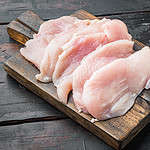
Slow-cooked Honey Pineapple Chicken
- Yield: 8 servings 1x
Ingredients
2 pounds boneless skinless chicken breast halves
2 Tablespoons canola oil
1 can (8 ounces) unsweetened crushed pineapple, undrained
1 cup packed brown sugar
½ cup honey
⅓ cup lemon juice
¼ cup butter, melted
2 Tablespoons prepared mustard
2 teaspoons reduced sodium soy sauce
Instructions
1. In a large skillet, brown chicken in oil in batches on both sides; transfer to a 5 qt. slow cooker.
2. In a small bowl, combine the remaining ingredients; pour over chicken.
3. Cover and cook on low for 3 to 4 hours or until meat is tender. Strain cooking liquid, reserving pineapple. Serve pineapple with the chicken.
Nutrition
- Serving Size: 1 serving
- Calories: 302
- Sodium: 180mg
- Fat: 9g
- Saturated Fat: 3g
- Carbohydrates: 33g
- Protein: 23g
- Cholesterol: 73mg
